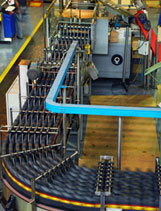 Even though traditional paperback books remain enjoyable for reading, most businesses would admit that pen and paper isn’t the best solution. Digital interfaces are a superior medium for business processes. Unfortunately 20 years after PC’s have gone mainstream, we still see manufacturers using paper binders for their shift or maintenance call logs.
Even though traditional paperback books remain enjoyable for reading, most businesses would admit that pen and paper isn’t the best solution. Digital interfaces are a superior medium for business processes. Unfortunately 20 years after PC’s have gone mainstream, we still see manufacturers using paper binders for their shift or maintenance call logs.
The Problem with Pen and Paper Maintenance Call Logs
As an integrator, we ask clients who use the binder approach to call logs if the entries are really useful to them. In the best case scenarios, the logs are digitally entered into massive spreadsheets. However, end users across multiple business functions have little ability to access and/or utilize the information for effective decisions. Technicians and engineers will admit that entering information is cumbersome and as a result the entry quality is low. They do not have much time to spend doing data entry work.
Gathering and sharing the information in a paper-based log is limited. During a busy workday, the information can be hard to find and reference because paper logs are often stored in multiple locations. The valuable data captured, if accessible would serve as a useful tool to improve machine efficiency.
The Advantage of Digital
There are three distinct advantages a digital process has over the paper-based approach: better entry, better storage, and more functionality.
A conversion to digital means that call log entries can be captured within the HMI as a standard part of a workflow process. The entry might sound like an additional burden on a resource, but its the opposite. Part of the information, such as name, date, asset ID, etc. can be automatically populated. This gives users more time to focus on the troubleshooting details. By forcing the entry at the point of service, the objective facts of the problem are going to contain important details that are more accurately conveyed. With digital entry, the process improves the data quality.
Digital logs can be centralized, backed up for retention and accessible from any networked machine. This gives multiple departments the ability to utilize the important information within the logs. Users can view recent logs on an HMI with a quick glance and can search logs to collect business intelligence. Utilizing maintenance call log information allows better decision making and predictive maintenance. This can result in increased productivity and reduction in downtime.



